U.S. service members take an oath to protect the Constitution against all enemies foreign and domestic, so it raises alarm bells and grabs headlines whenever a veteran commits an act of anti-government extremism.
Most recently, Ricky Walter Shiffer Jr., 42, was killed on Aug. 11 while reportedly attacking an FBI office in Cincinnati. Shiffer was a submariner in the Navy from 1998 to 2003, and then he served as an infantryman with the Florida Army National Guard from 2008 to 2011, during which he deployed to Iraq for a year, defense officials told Task & Purpose.
While an investigation into the Aug. 11 incident is ongoing, Shiffer reportedly posted on social media that he was upset with the FBI’s recent search of former President Donald Trump’s home in Mar-a-Lago, Florida. Moreover, on May 7, Shiffer’s Twitter account wrote the following reply to a post from Rep. Marjorie Taylor Green (R-Ga.): “Congresswoman Greene, they got away with fixing elections in plain sight. It’s over. The next step is the one we used in 1775.”
The current and former service members who have joined extremist groups represent a tiny percentage of the entire population of troops and veterans. But it’s also true that an increasing number of troops and veterans are taking part in extremist activities.
Between 1990 and 2021, a total of 461 Americans with military backgrounds committed extremist crimes, according to The National Consortium for the Study of Terrorism and Responses to Terrorism, known as the START Center. Of that number, 120 were charged in connection with the Jan. 6, 2021 attack on Congress.
Veterans and current service members made up about 8% of the American population as of 2018, but they comprised about 15% of all the people charged for the Capitol Hill riots, when a pro-Trump mob tried to overturn the results of the 2020 presidential election, according to the START Center, which is based at the University of Maryland.
Michael Jensen leads the domestic radicalization team for the START Center, which maintains a database of people in the United States who have been indicted or arrested for committing crimes inspired by extremist ideologies, including far-right, far-left, and Islamic beliefs. The most recent data shows that the number of Americans with military backgrounds who are committing extremist crimes has increased dramatically in recent years, he said.
“For a lot of years in the data, if you go back into the 1990s or early 2000s, we were adding maybe 10 individuals a year with military backgrounds to the data sets – very, very low numbers,” Jensen told Task & Purpose. “But then 2017 really marks this big change in the data, where all of a sudden we added over 30 individuals to the data that have military backgrounds. We just saw this upward trend: 2020 has nearly 60 individuals now in the data. Then of course, 2021 is massive because of Jan. 6, but even for the first seven-and-a-half months now of 2022, we’re about 30 cases already, so we’re trending for 50 individuals for 2022. So, this upward trend – just the raw number – is not slowing down. It’s not stopping.”
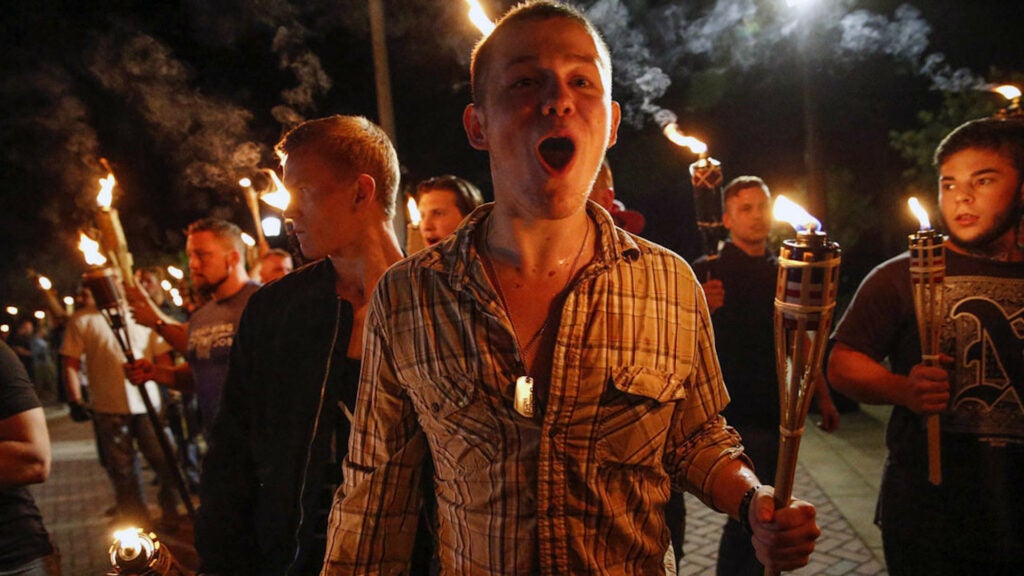
The overall percentage of Americans with military backgrounds committing extremist crimes is holding steady, but that’s only because the total number of people being arrested for such crimes has also increased tremendously, he said. In 2018, the START center added between 80 and 100 people to its database on domestic extremists. That number rose to about 230 in 2019 and more than 300 in 2020. The data for 2021 is still being collected. The START Center is currently debating whether all of the roughly 900 people arrested for the Jan. 6 riots should be counted as extremists, even if they don’t belong to extremist groups. That would push the total number of people entered in the database for 2021 to as high as 1,500.
Subscribe to Task & Purpose Today. Get the latest military news, entertainment, and gear in your inbox daily.
It’s difficult to find official statistics on how many actively serving troops and veterans have engaged in extremist activities.
“We don’t track cases that may or may not involve veterans specifically,” Justice Department spokesman Wyn Hornbuckle told Task & Purpose. “We typically track cases by statute.”
But there’s no doubt that veterans and service members are lucrative targets for groups that threaten American democracy.
Why some veterans and troops are being radicalized
In the absence of definitive data, the scope of the problem is unknown, said Jason Blazakis, senior research fellow at The Soufan Center, an intelligence and security consultancy.
Although the reason why troops and veterans become radicalized varies on a case-by-case basis, one broad reason why they join extremist groups or carry out anti-government activities is that they feel American democracy has stopped abiding by its founding tenants, Blazakis told Task & Purpose.
“It’s because America, somehow, has gotten away from these kinds of core values that you have individuals who’ve lost faith in federal government and are joining organizations that profess to try to put America back on the right path, like the Oath Keepers, the Three Percenters, the Proud Boys,” Blazakis said. (The Three Percenters are a militia movement that advocates overthrowing the government; the Proud Boys are a white supremacst group that has brawled with far-left protesters; and the Oath Keepers are a far-right militia group led by an Army veteran with a logo designed to look like the Army’s Ranger tab.)
This sort of disenchantment with democracy is often driven by a lack of faith in America’s institutions, such as Congress, Blazakis said. That dissatisfaction with the legislative branch contributed to the Jan. 6, 2021 insurrection.
“This is an area where [defense] secretary Austin has made a lot of efforts to try to ensure that radicalization and extremist symbols and extremism doesn’t percolate within the ranks,” Blazakis said. “This is a very new initiative. Until Austin really stepped forward, at very senior levels I think people were trying to ignore this challenge that’s been around for a really long time. It’s not specific to the 2020s. It’s an old phenomenon. You can go back to 1995 to see who the perpetrator of the Oklahoma City attack was – he had a military background.”
Timothy McVeigh, who was convicted of carrying out the Oklahoma City terrorist attack that left 168 people dead, served in the Army from 1988 to 1991, during which he fought in the Gulf War. He was executed in June 2001.
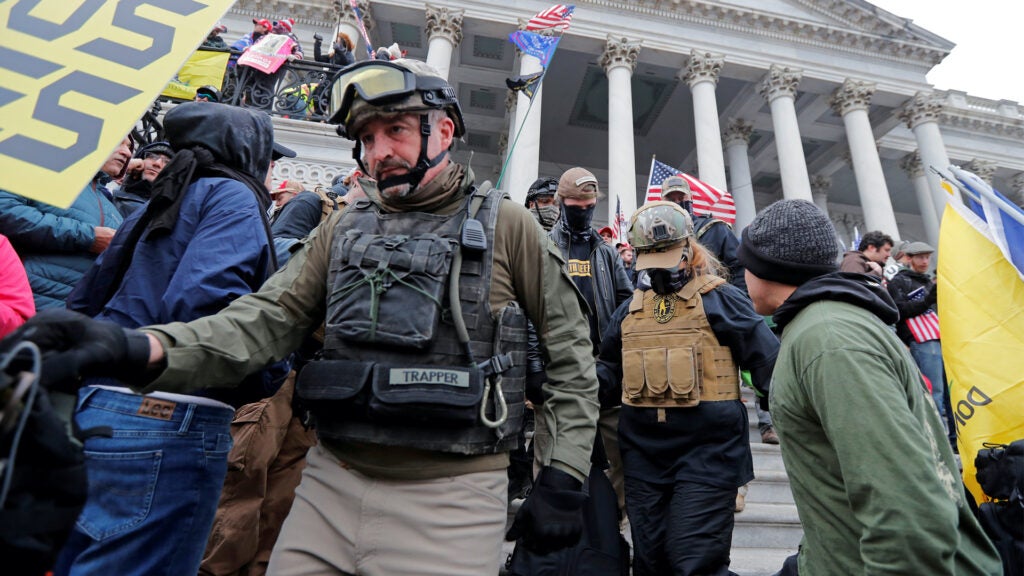
Shortly after Defense Secretary Lloyd Austin was appointed in 2021, he ordered the entire military to hold stand-downs for troops to talk about racism and extremism within the ranks. The move was widely criticized by Republican lawmakers, who have accused the Pentagon of trying to indoctrinate troops with “Critical Race Theory.”
In December, the Pentagon announced that it had expanded its definition of “extremist activities” that U.S. troops are not allowed to engage in, finally closing a loophole that had allowed troops to belong to extremist groups so long as they were not actively participating in extremist activities. At the time, the Defense Department had identified about 100 active-duty and reserve component service members who had participated in extremist activities.
Based on its results so far, Republicans on the Senate Armed Services Committee along with Sen. Angus King (I-Maine) have called on the Defense Department to cease all efforts to identify extremists who are serving in the military. The Republicans and King have added a report of the Senate version of the proposed fiscal 2023 National Defense Authorization Act that argues, “Spending additional time and resources to combat exceptionally rare instances of extremism in the military is an inappropriate use of taxpayer funds, and should be discontinued by the Department of Defense immediately.”
This type of action is typical for Congress, and that is a major reason why there still is no definitive data on how widespread extremism really is within the military and in the veterans’ community, said Kristofer Goldsmith, an Iraq war veteran and CEO of Sparverius, a firm that tracks disinformation and domestic extremism.
“Congress is caught in this cycle of denial and a lack of willingness to fund studies of the problem,” Goldsmith told Task & Purpose. “So, there is no clean answer of how many white supremacists are in the military; how many people in the military don’t believe that Joe Biden is their commander in chief; how many service members have been radicalized by anti-vaccine rhetoric; how many service members believe that the attack on the Capitol was Americans acting as patriots; and how many service members believe in QAnon-affiliated conspiracy theories; how many service members are affiliated with the Three Percenters or Oath Keepers or other extremist organizations?”
Troops and veterans, by virtue of their service can be powerful social influencers, so extremist groups prey on them to gain credibility with the broader public, said Goldsmith, who added: “Therefore, when our belief system, value system, voting behavior changes, we’re more likely than others to take people with us on that journey.”
Former Marine Maj. Kyleanne Hunter, who has conducted research into veterans’ roles in local politics, has found that most people tend to trust veterans more than non-veterans on just about every issue.
Given the gravitas that veterans enjoy in society, they can help to legitimize fringe causes when they join extremist groups, said Hunter, who is now a senior political scientist at the RAND Corporation.
“Even if they are the minority in number, they are more prominent in the public eye and lend a sense of credibility to these positions,” Hunter told Task & Purpose.
The fact that relatively few current and former service members have been tied to anti-government extremism does not diminish the significance of the problem, said Katherine Kuzminski, director of the military, veterans, and society program at the Center for a New American Security think tank in Washington, D.C.
“I think the initiative behind the stand down last year was a recognition that this isn’t a widespread sentiment, but that it’s damaging enough to unit cohesion, to recruitment efforts,” Kuzminski told Task & Purpose. “So, I think some of the debate that we’re seeing on the congressional side is: How many resources do you put behind rooting out a very small number [of troops] with a very large impact.”
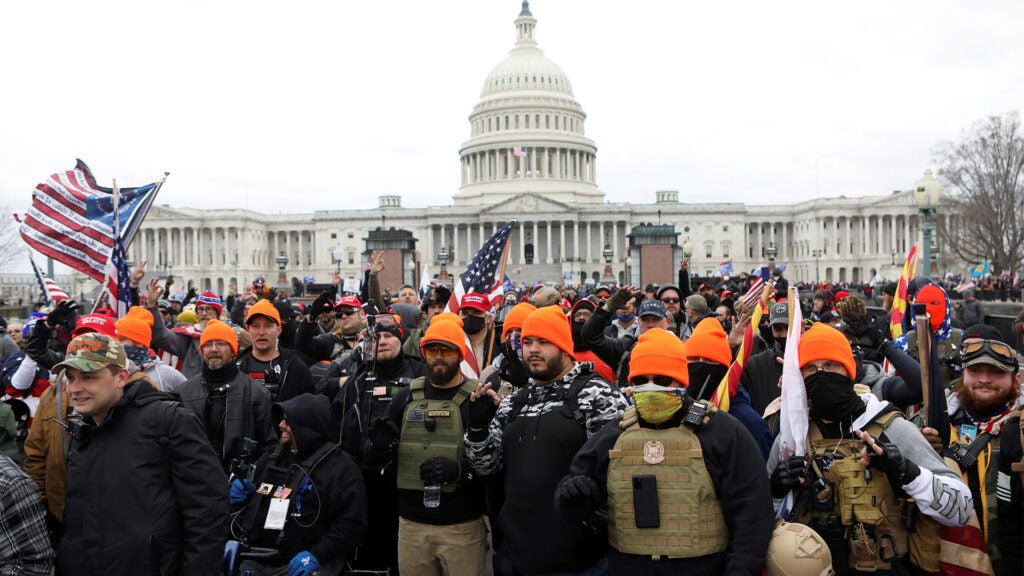
One reason why more people with military backgrounds are turning to extremism could be service members’ objections to the Defense Department mandate that all troops be vaccinated for the novel coronavirus (COVID-19), Kuzminski said. Top defense officials have repeatedly said the vaccine mandate is tied to readiness, but some service members have felt it is an attack on their political or religious beliefs.
Kuzminski said her research includes looking into whether service members who have been separated for refusing to get vaccinated will join extremist groups.
“It may have actually weeded out anti-government sentiment within the services, but it may increase their representation in the veterans’ population,” Kuzminski said.
Is military extremism a growing threat, or are we just seeing it in the news more?
The data shows that most current and former service members do not belong to extremist groups. However, when veterans and troops do commit crimes, media coverage of those events can play an outsized role in shaping public perception of the military and veteran community writ large.
“Veterans are among our nation’s finest and most loyal patriots,” said Terrence Hayes, a spokesman for the Department of Veterans Affairs. “Like any group of Americans, the Veteran community is not a monolith. The overwhelming majority of veterans neither commit nor condone extremism-related violence. In fact, many veterans have fought and sacrificed to protect our nation against exactly this type of behavior.”
Zack Baddorf, executive director of Military Veterans in Journalism, a group that helps veterans get jobs in the media, noted that early media reports about the Jan. 6 riots focused on the veterans and service members who had breached the capital, creating the impression that extremism was rampant within the ranks.
Although many of the people who were initially arrested for taking part in the Jan. 6 insurrection had ties to the military, current and former service members now represent a much smaller percentage of the suspects accused of breaching the Capitol because many more people have since been prosecuted for the riot, Baddorf told Task & Purpose.
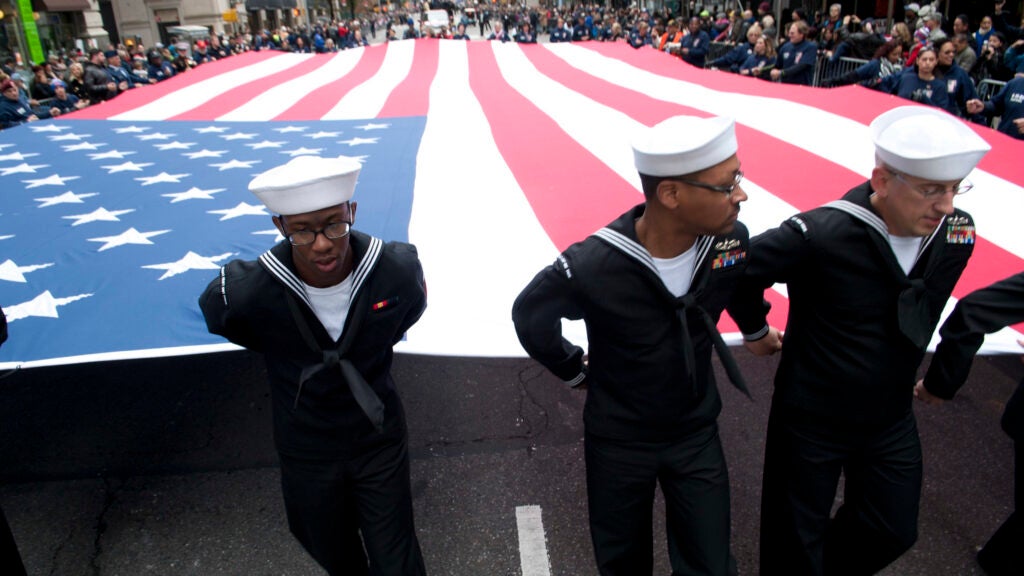
“My advice for reporters is to not over-generalize,” Baddorf said. “Sadly, these extremist groups are targeting veterans to exploit the honor and prestige of the military and veteran community, bolstering these groups’ perceived patriotism and professionalism. But it’s important to understand that some of the veterans in these groups may exaggerate their otherwise lackluster service in the armed forces. Reporters should take the time to request the military records and dig deeper. Journalists should also turn to other military veterans who can explain the terminology and nuance of military service.”
Whenever veterans or currently serving troops are arrested for extremist or other violent crimes, media outlets have a tendency to inflate their service record. After Bryan James Riley was arrested for allegedly killing four people in Florida, some media outlets reported he had been a “sharpshooter” in the Marine Corps, implying he was some sort of sniper. Actually, he had just qualified as a sharpshooter on the rifle range, which meant he scored in between the lowest and highest scoring ranges.
These types of exaggerations eventually led to the Associated Press to advise journalists not to use the term “military training” too broadly to avoid painting all veterans as experts on combat. One example the AP provided was: “Police said the suspect was a cook at Eglin Air Force Base, not police said the suspect had military training.”
Jeremy Butler, Chief Executive Officer of Iraq and Afghanistan Veterans of America, said he understands that it is important for media outlets to report on veterans tied to extremism, but the media also needs to include an explanation about why extremists seek out veterans in the first place.
“What I’m trying to say is there’s a reason for identifying a veteran as caught up in extremism, not because they are representative of veterans overall – in fact, we know that they are a very, very small percentage of the veteran community – but we do know that they’re targeted, that they they’re recruited, and when they are sought out, it has an increasingly and larger-than-life negative effect on the rest of us.”
Retired Marine Col. David Lapan, who has worked extensively with reporters at the Pentagon and Department of Homeland Security, said it is important for the media to put incidents of veterans involved with extremism into perspective.
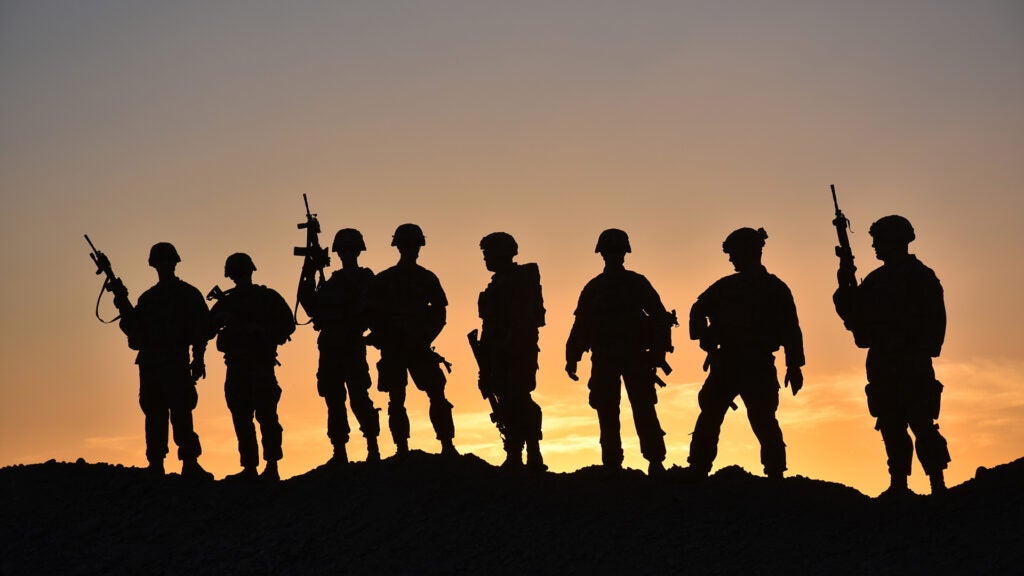
Just like military aircraft crashes, suicide deaths, and cases of sexual harassment and assult, the media need to put the issue of extremism into perspective and show how each incident fits into the larger picture, Lapan told Task & Purpose.
“Extremism in the ranks is harder to quantify however so it’s a challenge to provide comparative data or perspective,” Lapan said. “But you can report on the data that is available, note that it’s likely underreported (like sexual assault/sexual harassment), and explain the impacts extremist views have on military life, unit cohesion, and interpersonal relationship. Explain why data or facts on extremism is challenging to obtain.”
When it comes to extremism in the veterans’ community, Lapan urged media outlets to report what is known, such as the numbers of veterans involved in the Jan. 6 riot.
“Explain that even without definitive data on veterans with extremist views or membership in extremist organizations, the existence of extremists among veterans is dangerous – both for the damage it does to the reputation of the military and for the application of the skills for which they are recruited, of which they bring to the world of domestic extremists.”
Chaps McNealy, a Marine veteran and co-host of the Zero Blog Thirty podcast said he believes the AP’s guidance to reporters is a good first step toward covering troops and veterans better.
McNealy also cautioned people at large to avoid generalizing about veterans, just as they shouldn’t assume that one particular person is representative of ethnic groups, LGBTQ people, or other communities.
“When you make that assumption that just because someone is a part of that group that their ideologies, their actions, the way they cope with stressors, the way they cope with any day-to-day activity is going to be the same, I think that leads us down a path that’s not true,” McNealy said. “As a veterans group, we are as diverse as the population that we protect.”
Media coverage aside, the data shows that an increasing number of current and former service members are being drawn to extremism, even if the overall number of troops and vets committing extremist crimes is relatively low.
Service members and veterans who join extremist groups or take part in anti-government activities are not representative of all men and women who have worn their nation’s uniform, but they do undermine the military’s proud tradition of being an apolitical force dedicated to defending the Constitution.
“Although extremism in the ranks is hard to quantify, its existence is pernicious for many reasons, and whatever DoD and the services can do to identify, train individuals to recognize signs, and take action to keep service members and families away from extremist views and organizations, the better for the functioning of the military and for its reputation with the American people,” Lapan said. “The military’s allegiance to the country and Constitution must be paramount. Service members cannot have allegiances to organizations that promulgate and practice hate, prejudice and unlawful violence against others. Or to hold those ideas and values even if they don’t belong to or associate with known groups.”
The latest on Task & Purpose
Want to write for Task & Purpose? Click here. Or check out the latest stories on our homepage.
